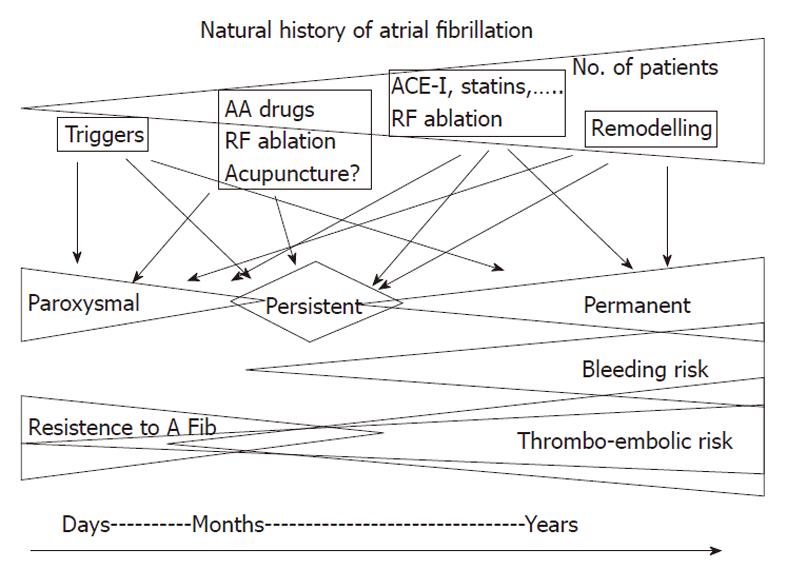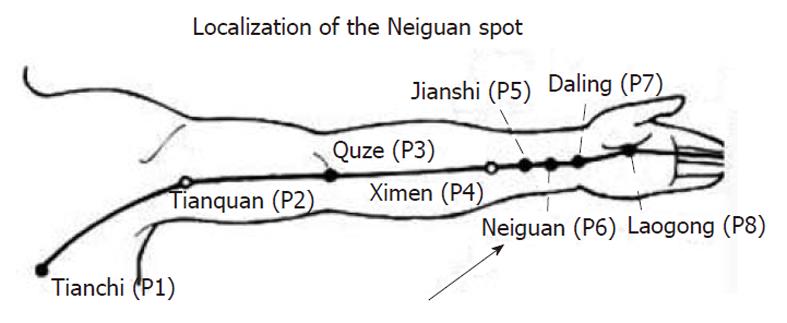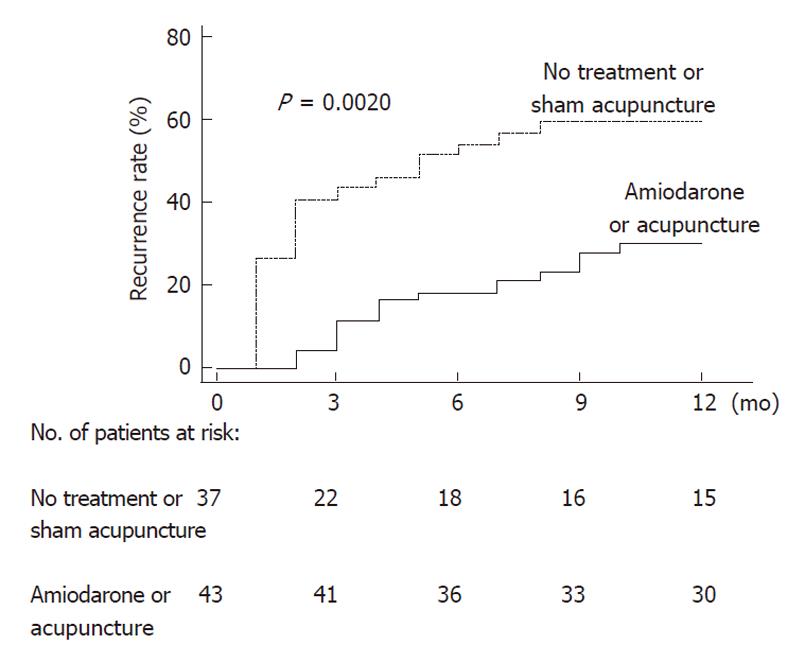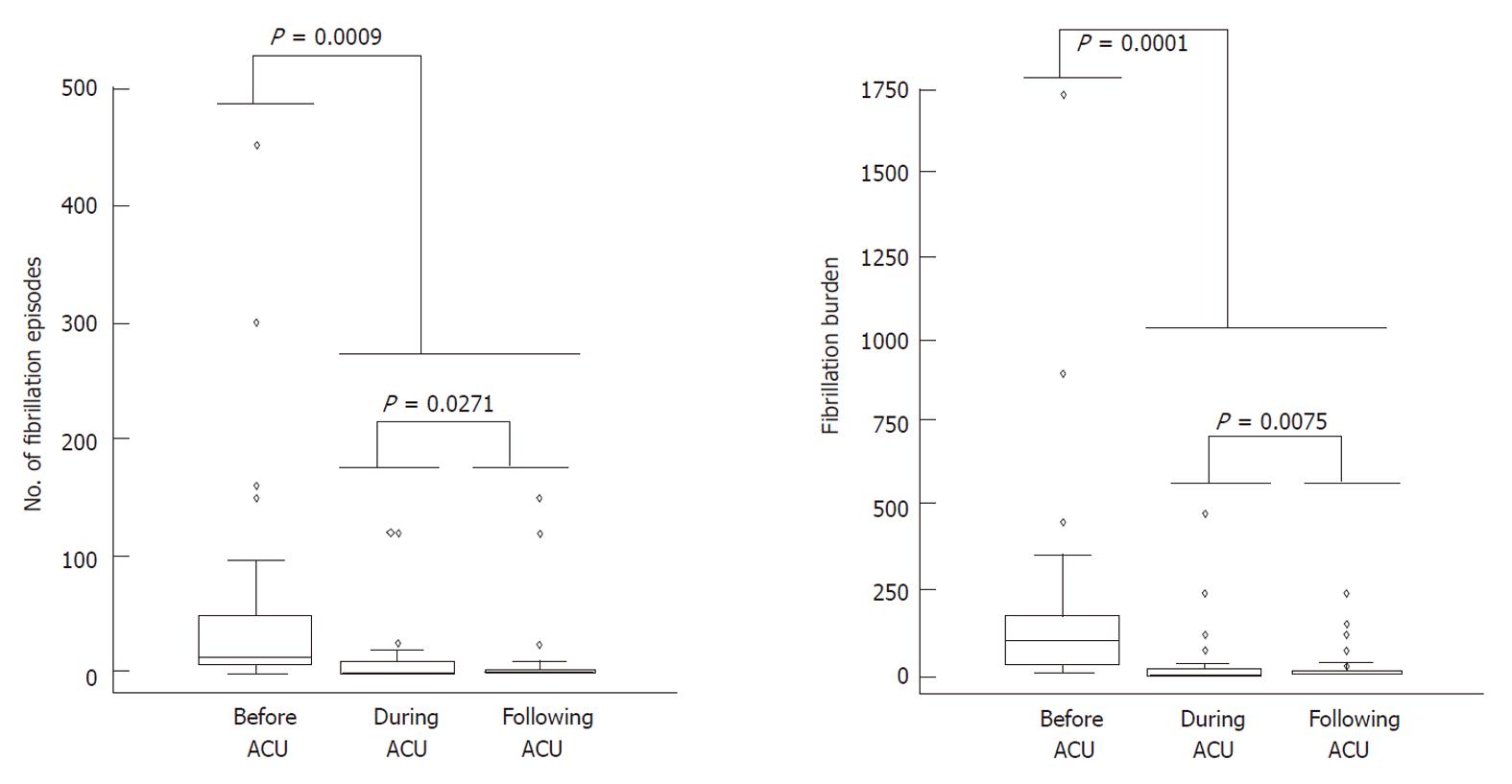Copyright
©2012 Baishideng Publishing Group Co.
Figure 1 Schematic representation of the temporal changes of the factors that favor or oppose to atrial fibrillation.
Initial (left side) triggers play a major proarrhythmic role and need to be targeted by therapeutic interventions. With time and the change from paroxysmal to persistent atrial fibrillation (AF), both triggers and structural alterations become critical and both have to be targeted by therapy. Finally, when structural alterations become extensive and not reversible, AF becomes permanent. The timing of this journey varies from patient to patient and is likely to be related to cardiac and non-cardiac factors. RF: Radio frequency; AA: Antiarrhythmic; ACE-I: Angiotensin converting enzyme inhibitor.
Figure 2 Insertion point for acupuncture.
The PC-6 (Neiguan in modern Chinese language) spot situated in the heart meridian is indicated by an arrow.
Figure 3 Cumulative recurrence rate.
Kaplan and Meier plots of recurrence of atrial fibrillation after electrical cardioversion in patients receiving amiodarone or acupuncture (solid line) compared with no treatment or sham acupuncture (dotted line).
Figure 4 Number of atrial fibrillation episodes and atrial fibrillation burden in the period before, immediately after and during follow-up of acupuncture treatment in patients with paroxysmal atrial fibrillation.
Comparison of the different experimental conditions was made using Friedman’s non-parametric analysis of variance for repeated measurements. ACU: Acupuncture.
- Citation: Lombardi F, Belletti S, Battezzati PM, Lomuscio A. Acupuncture for paroxysmal and persistent atrial fibrillation: An effective non-pharmacological tool? World J Cardiol 2012; 4(3): 60-65
- URL: https://www.wjgnet.com/1949-8462/full/v4/i3/60.htm
- DOI: https://dx.doi.org/10.4330/wjc.v4.i3.60












